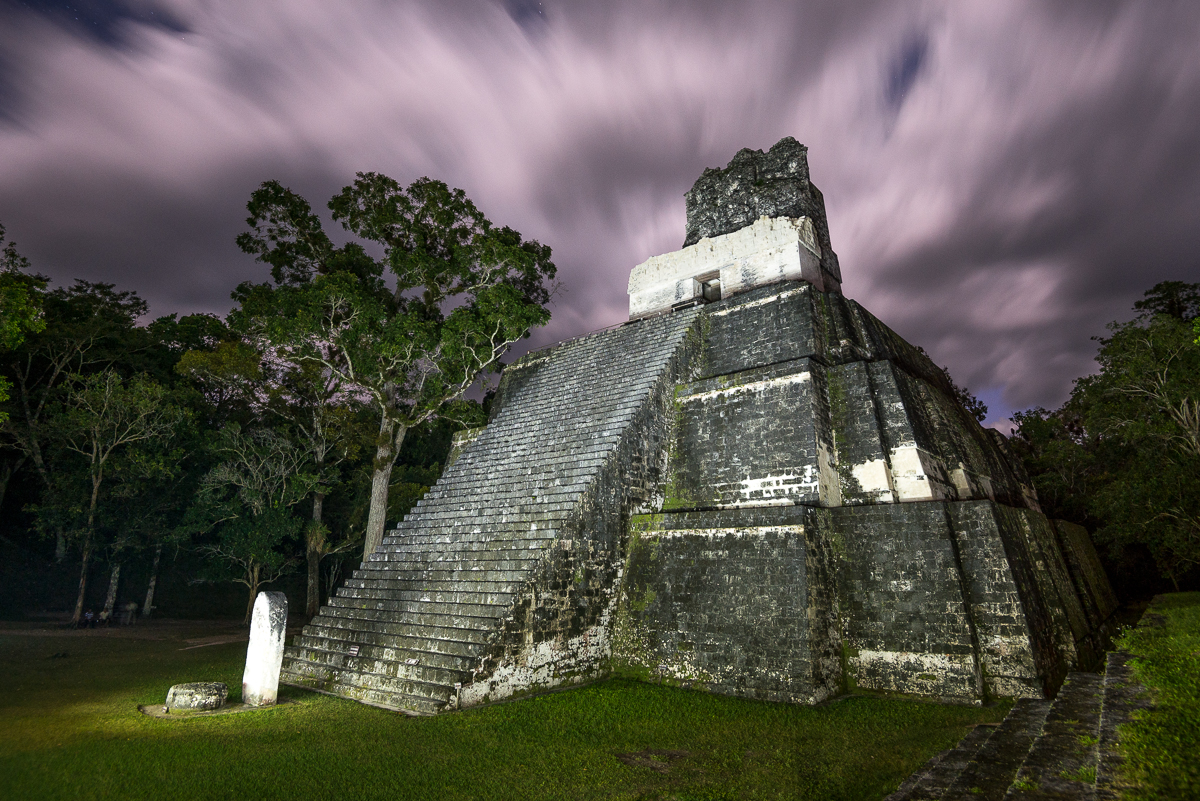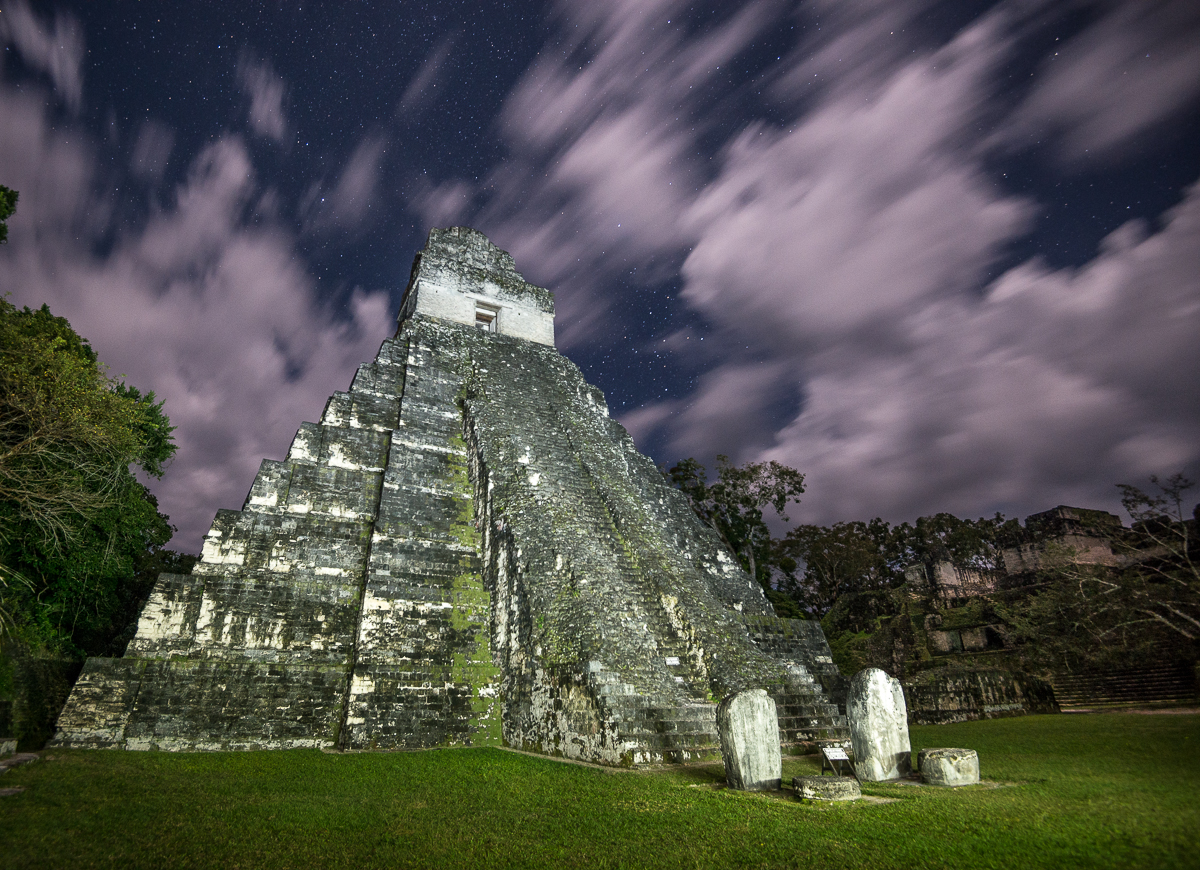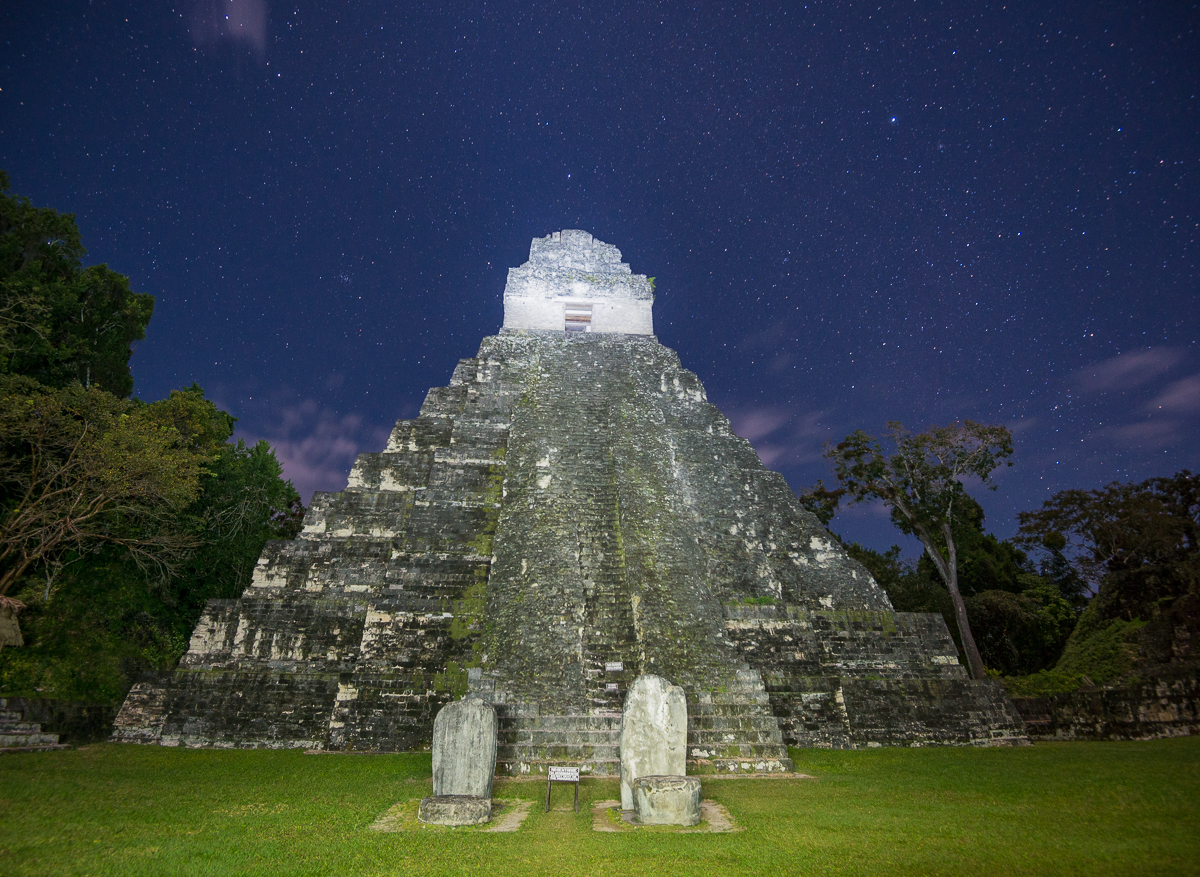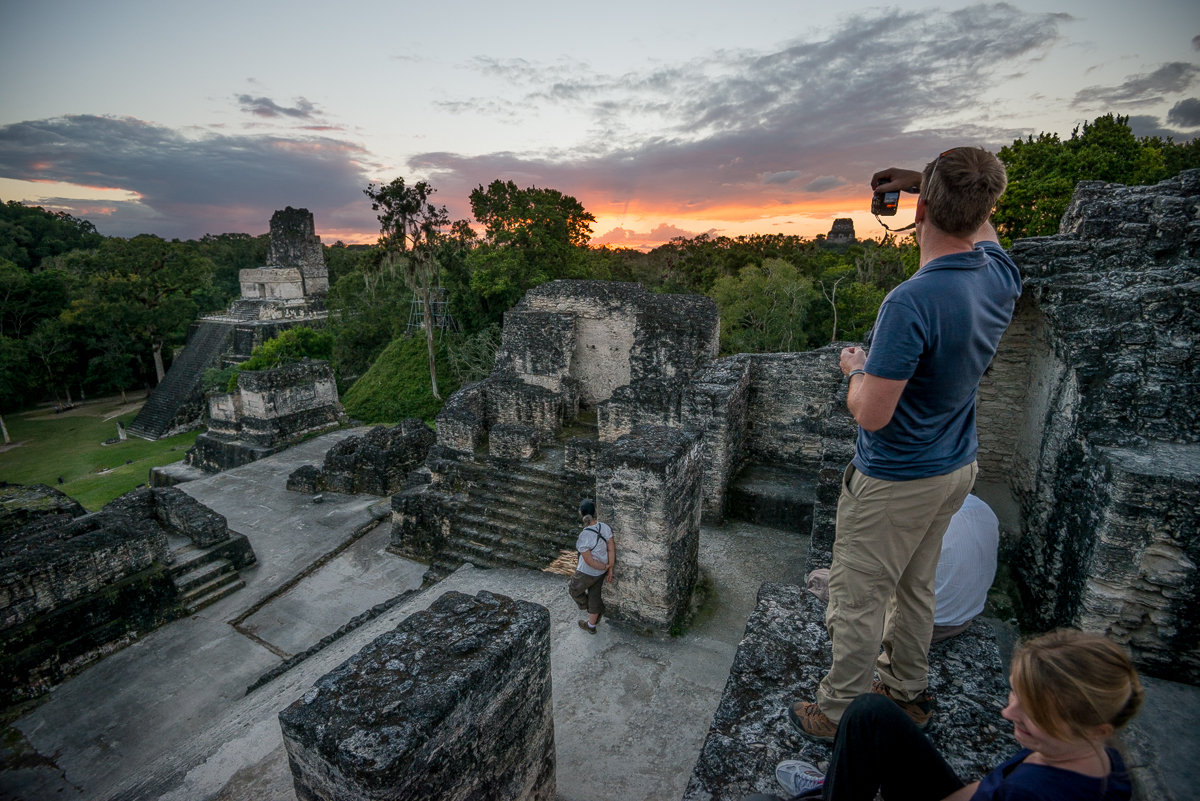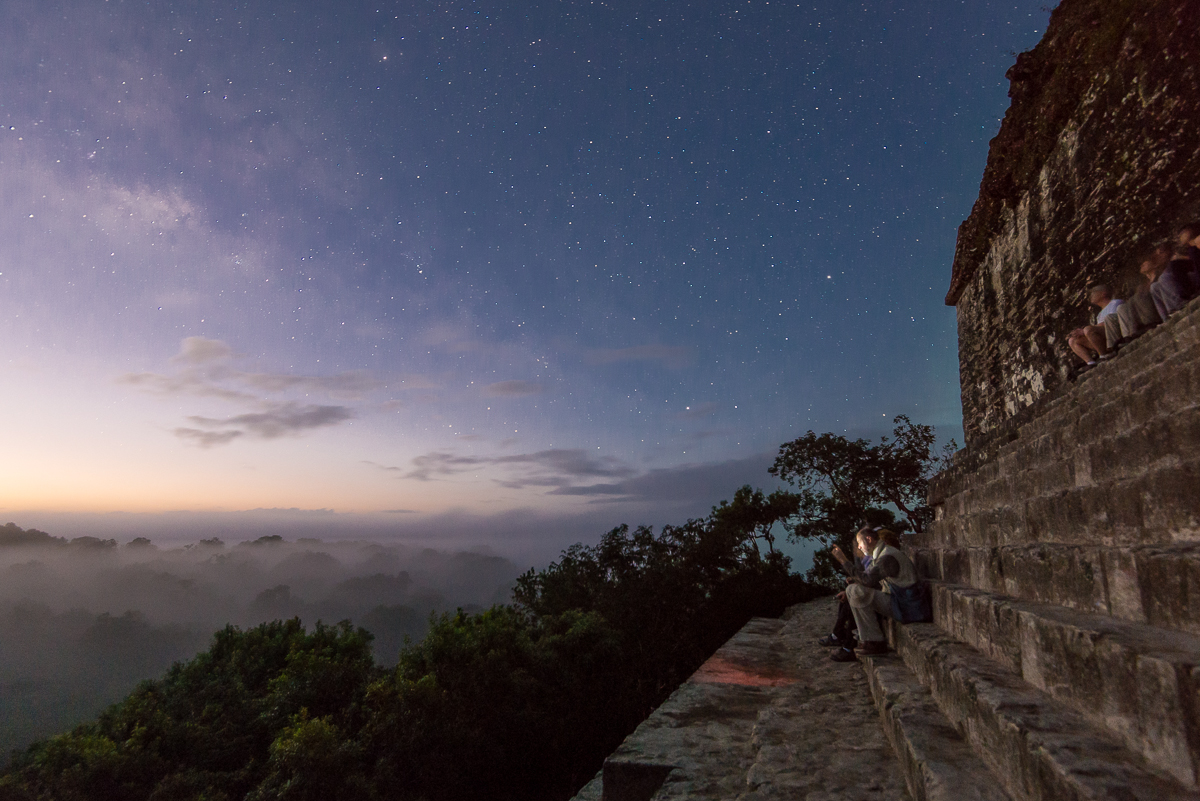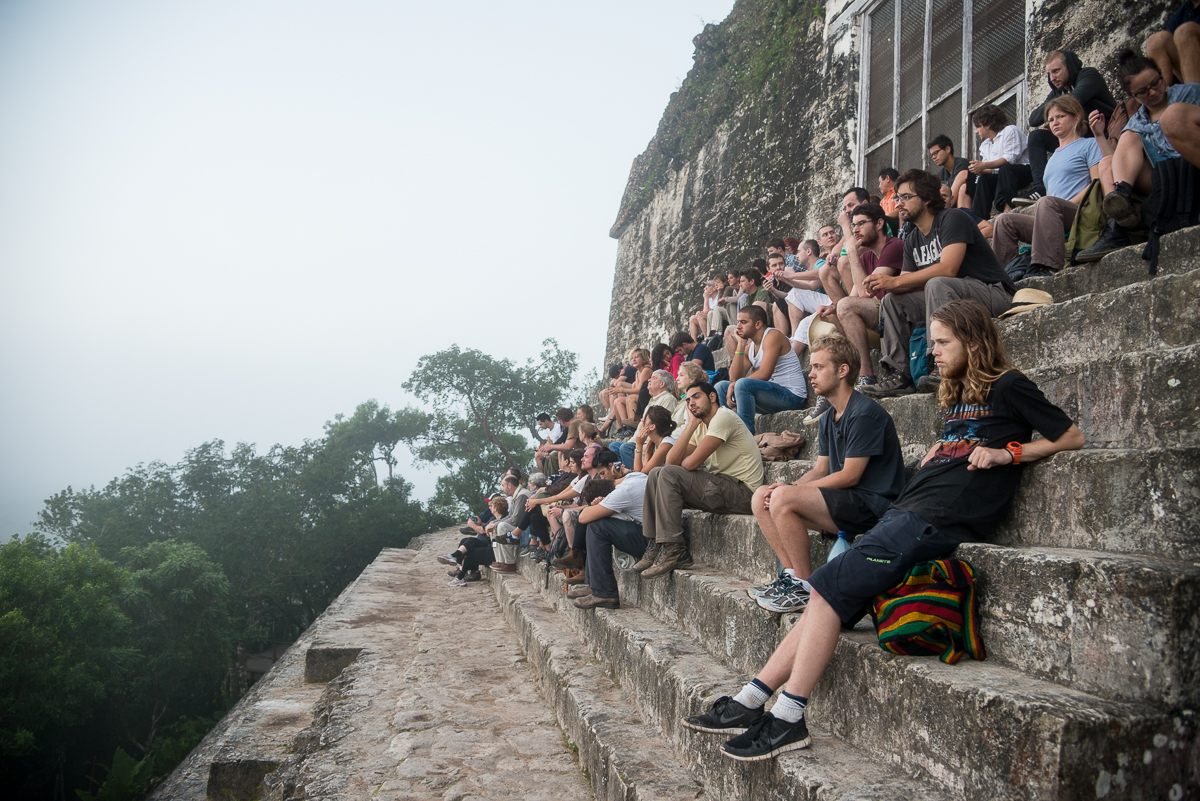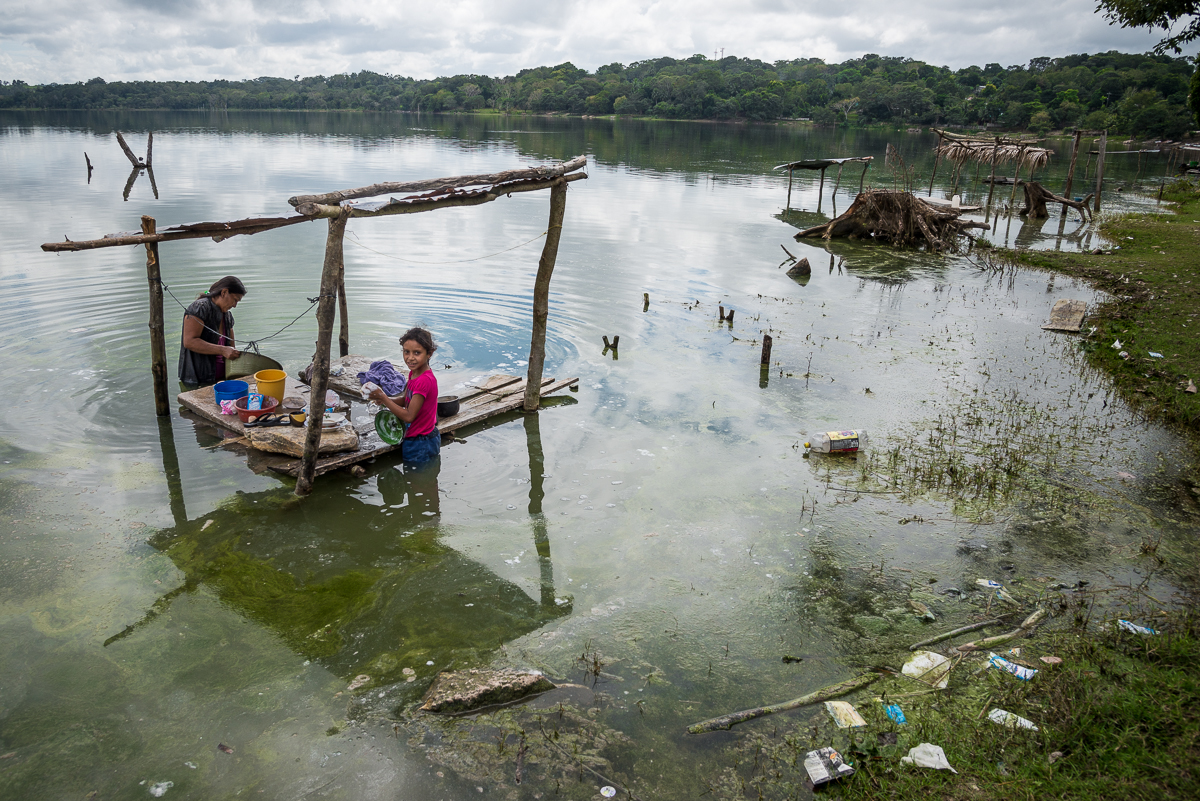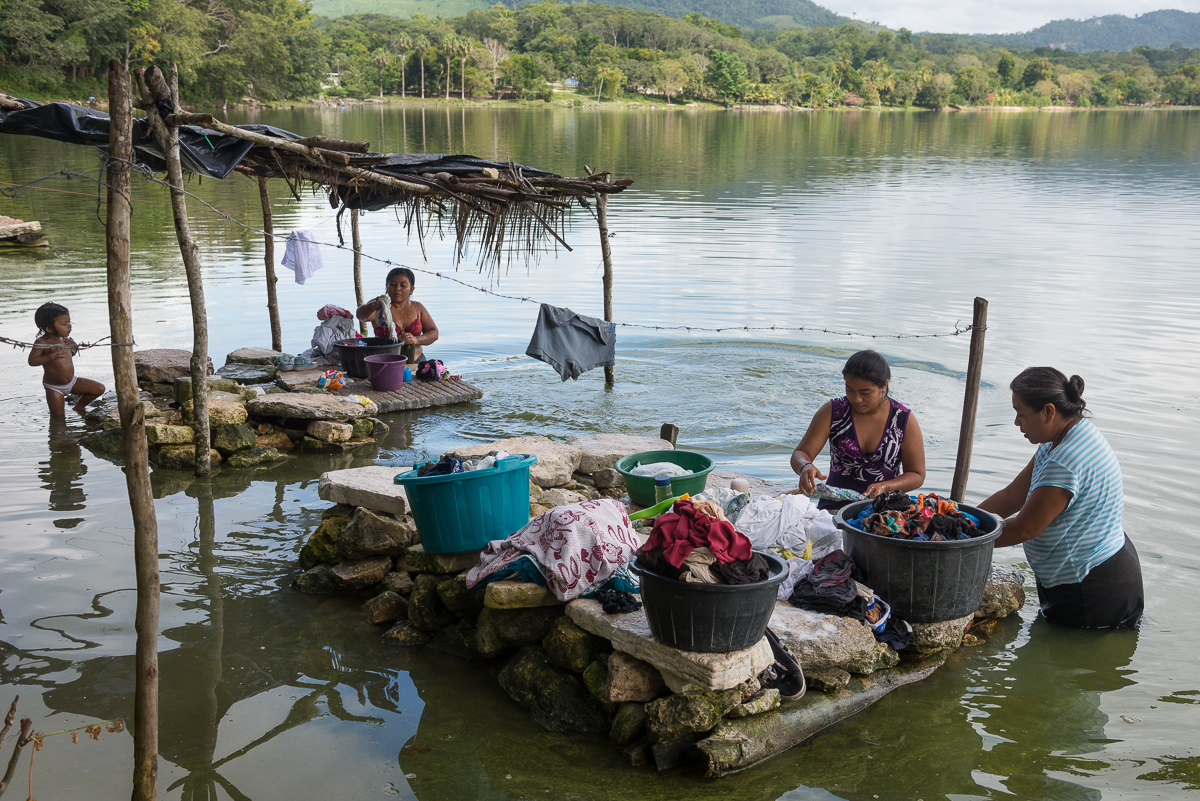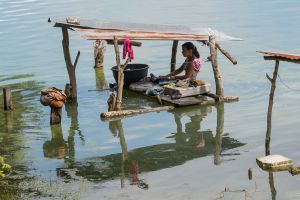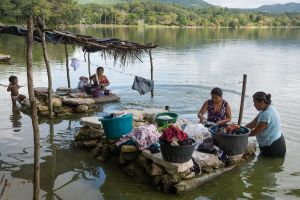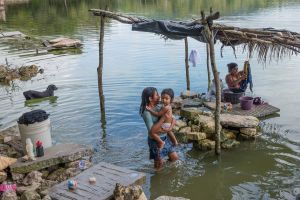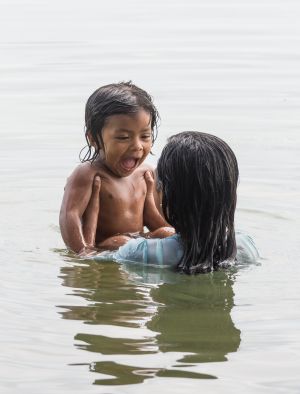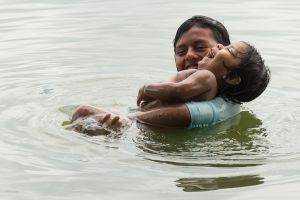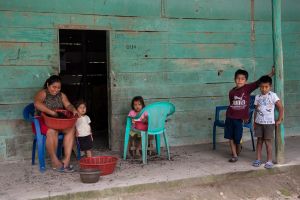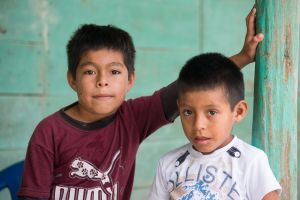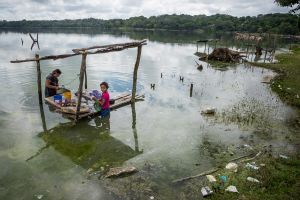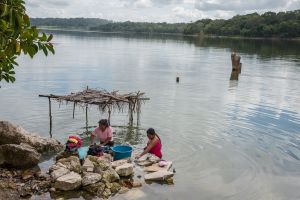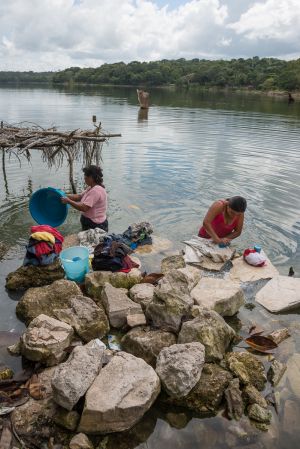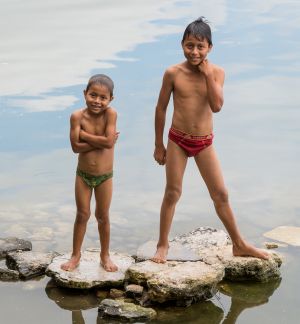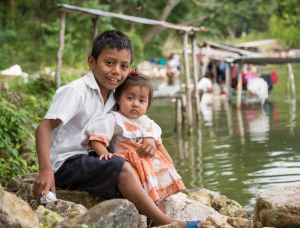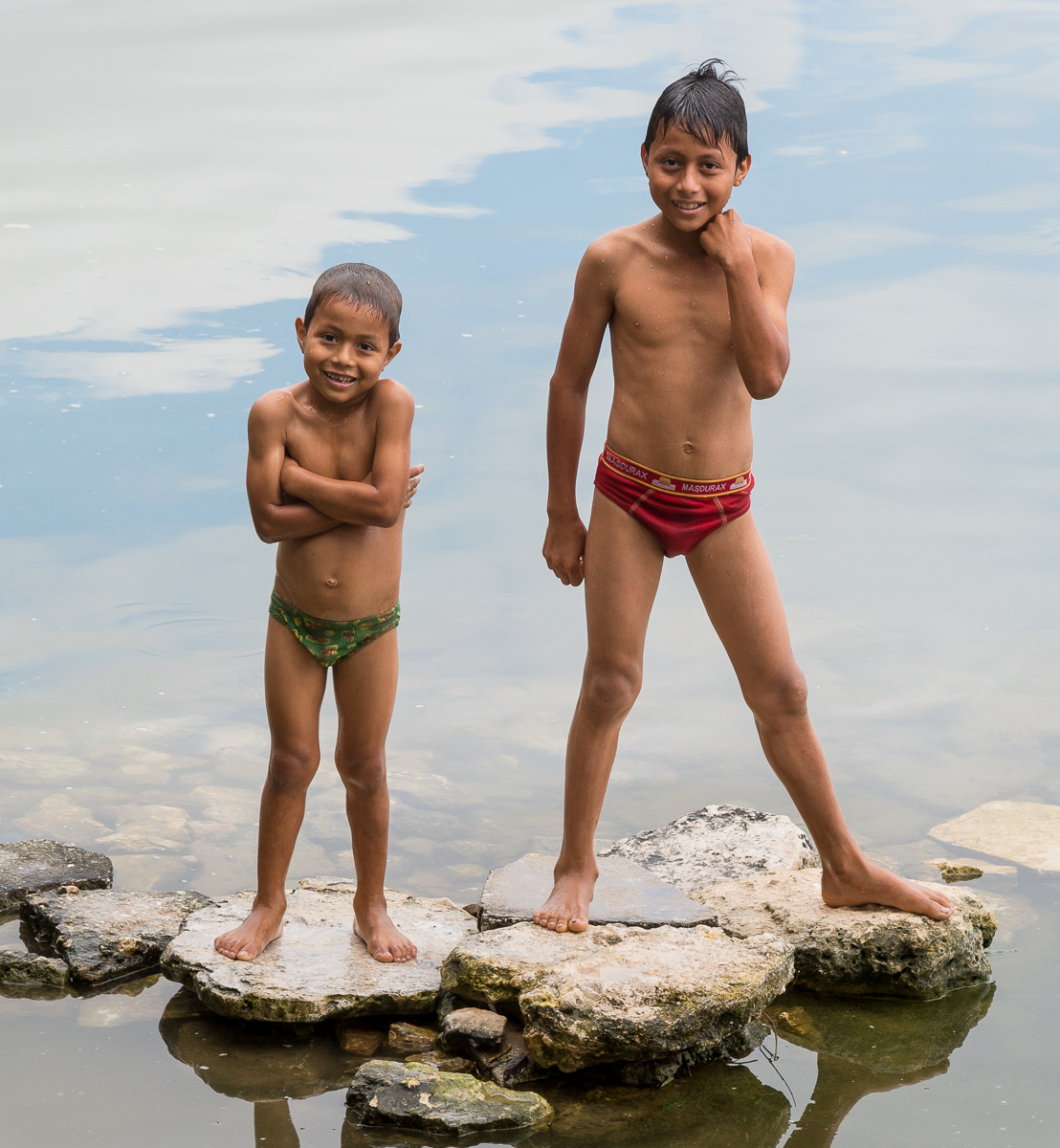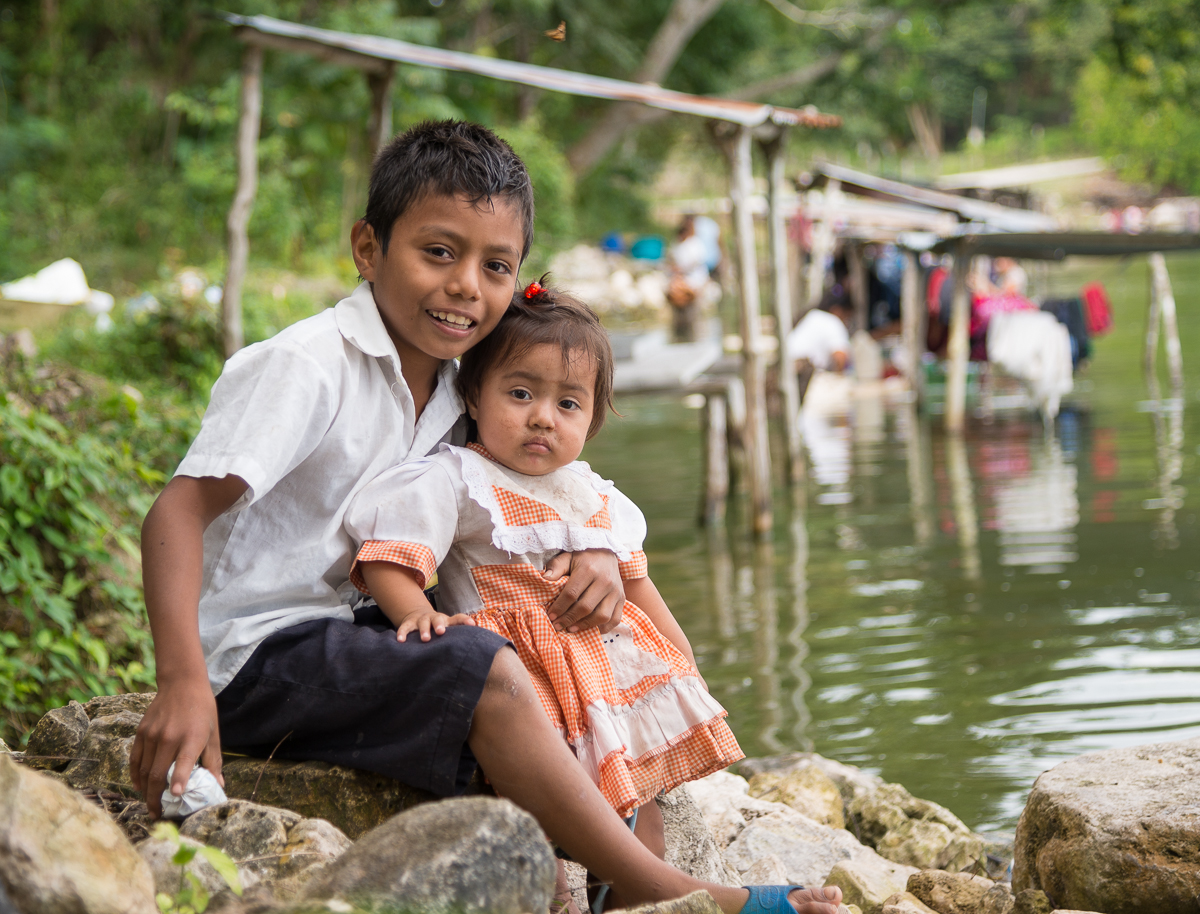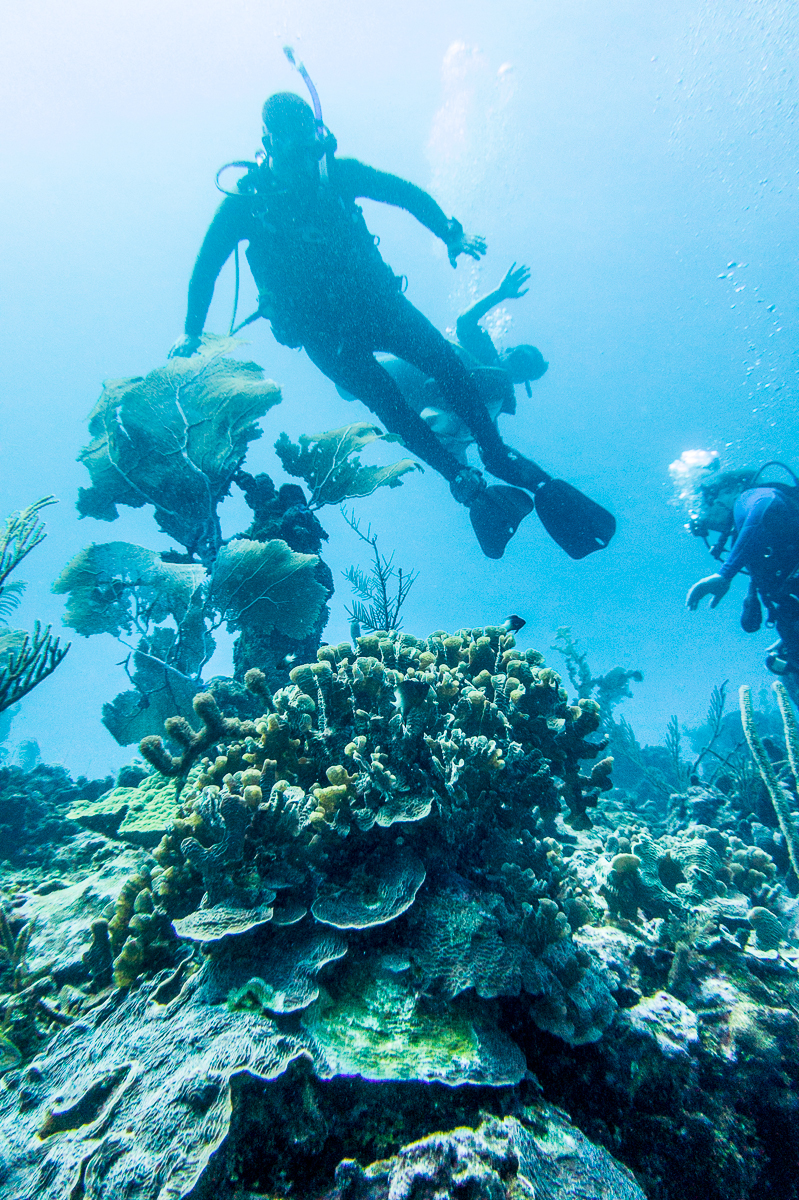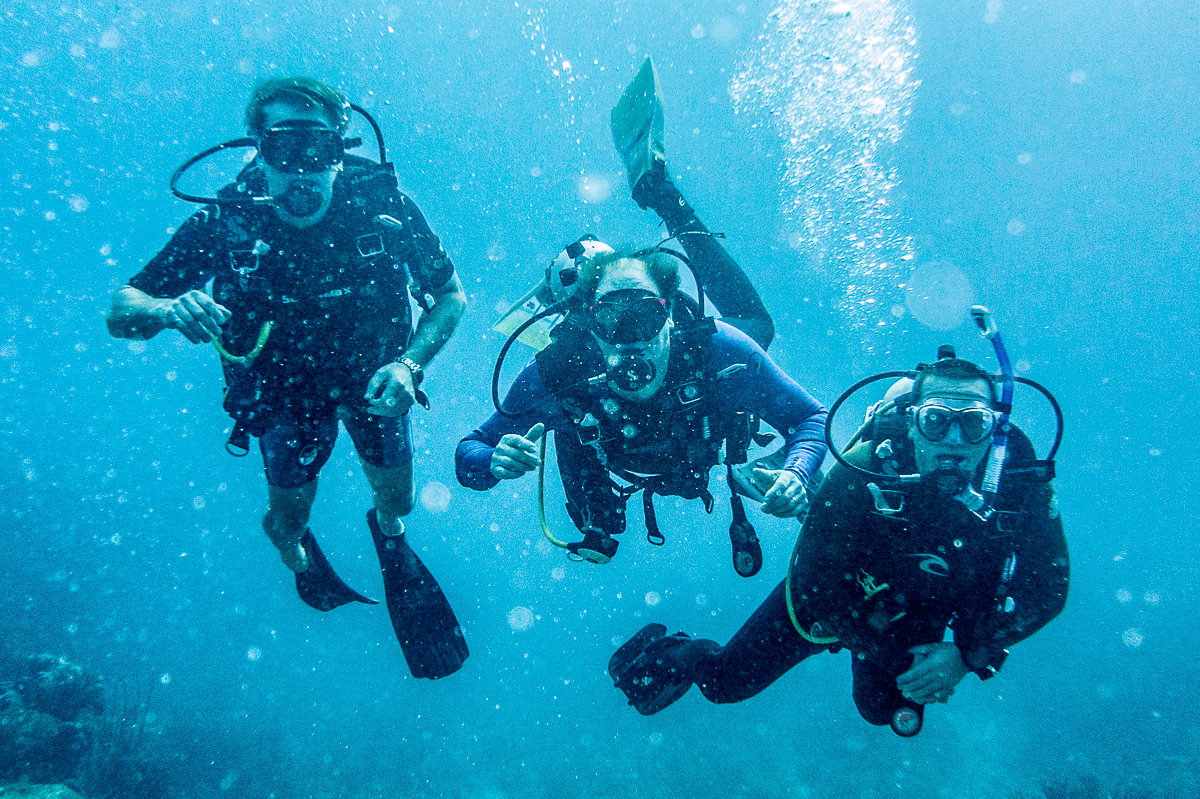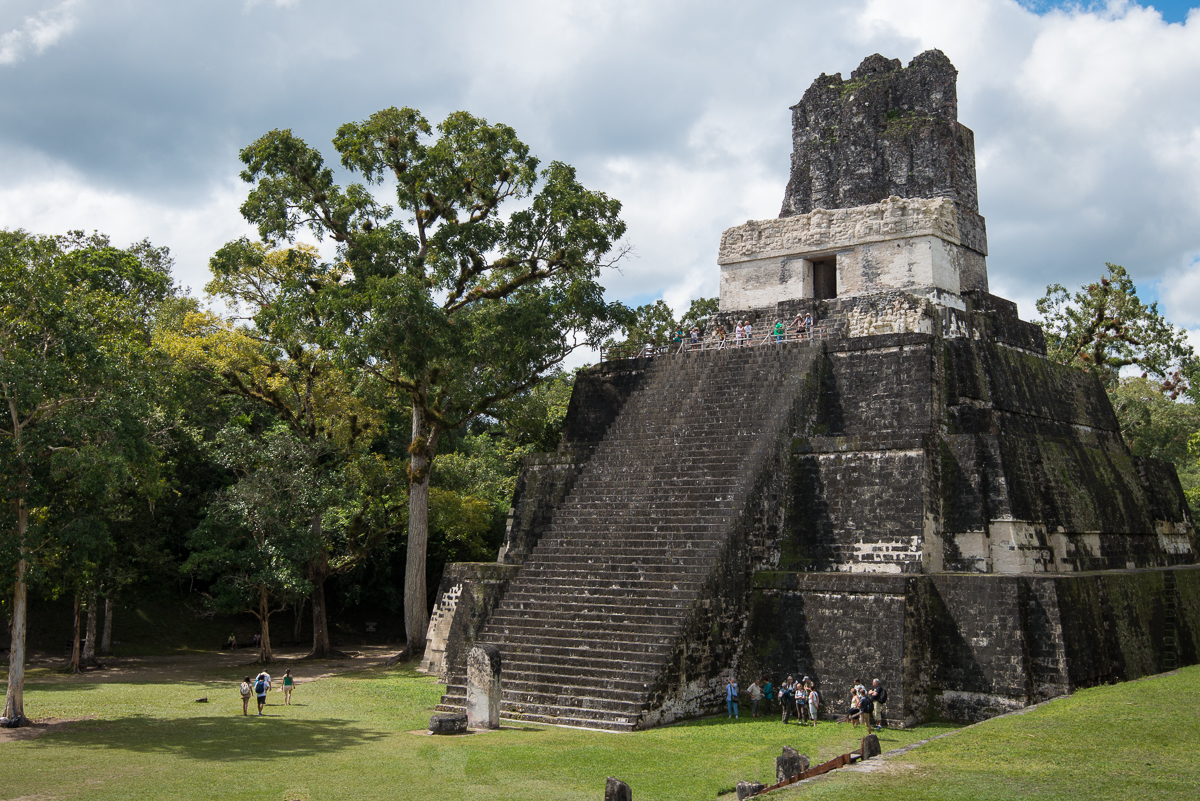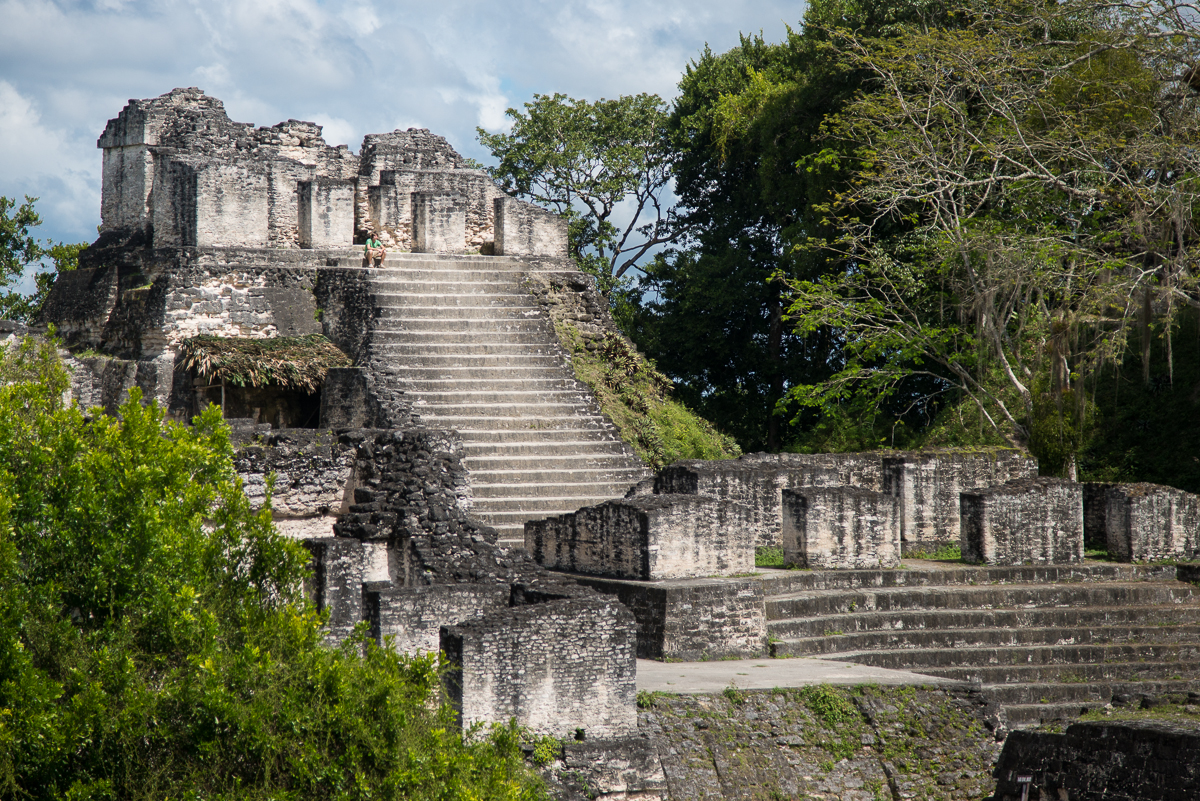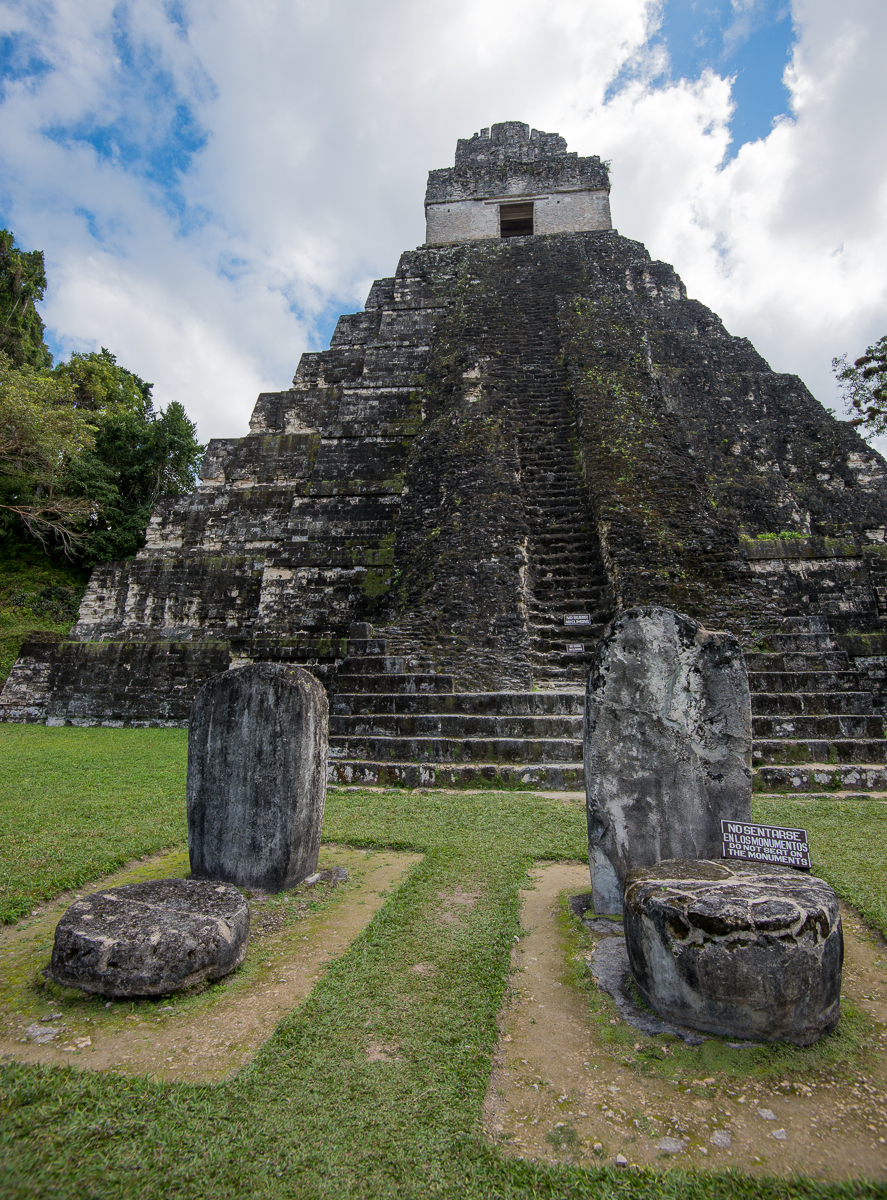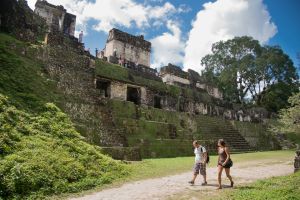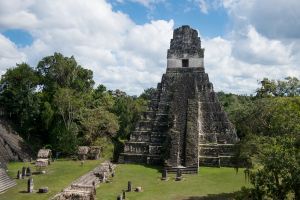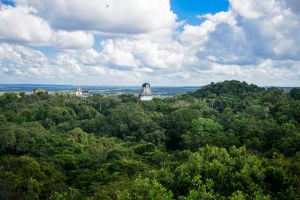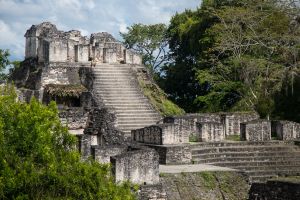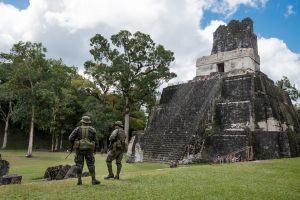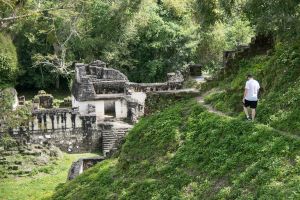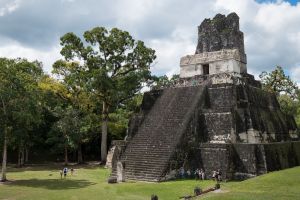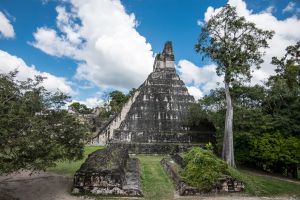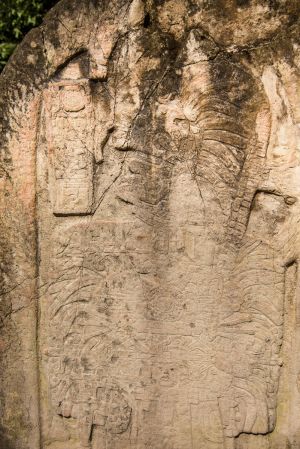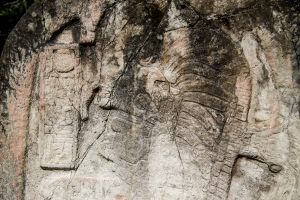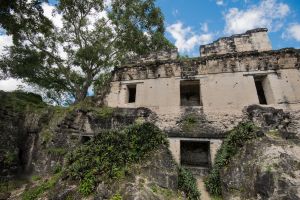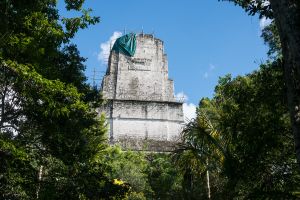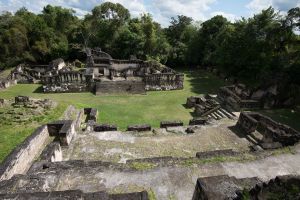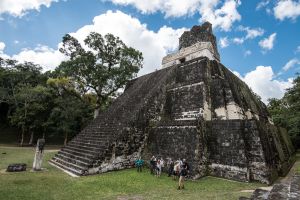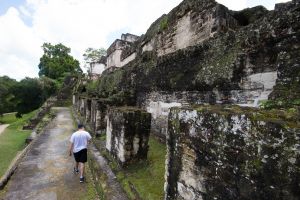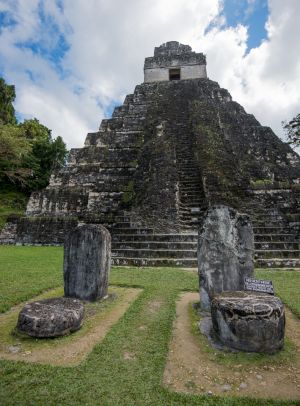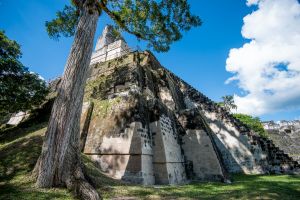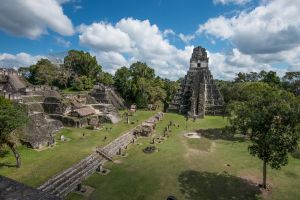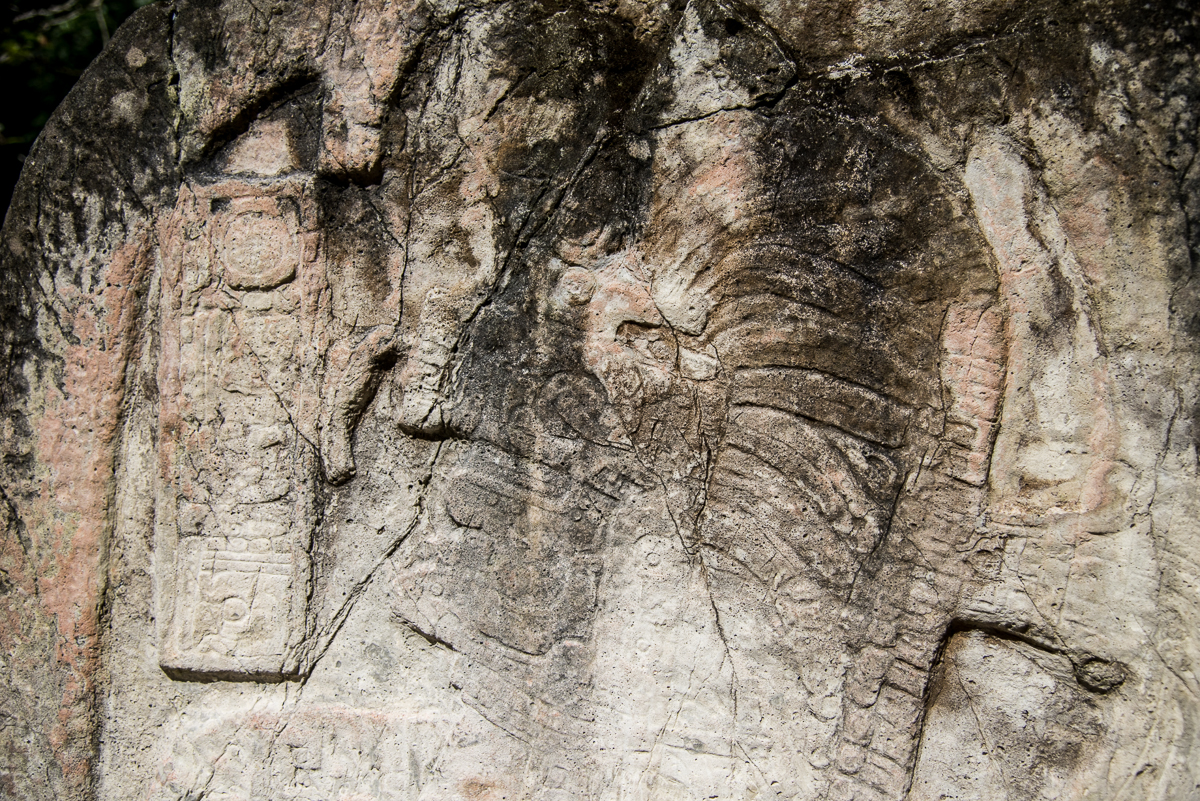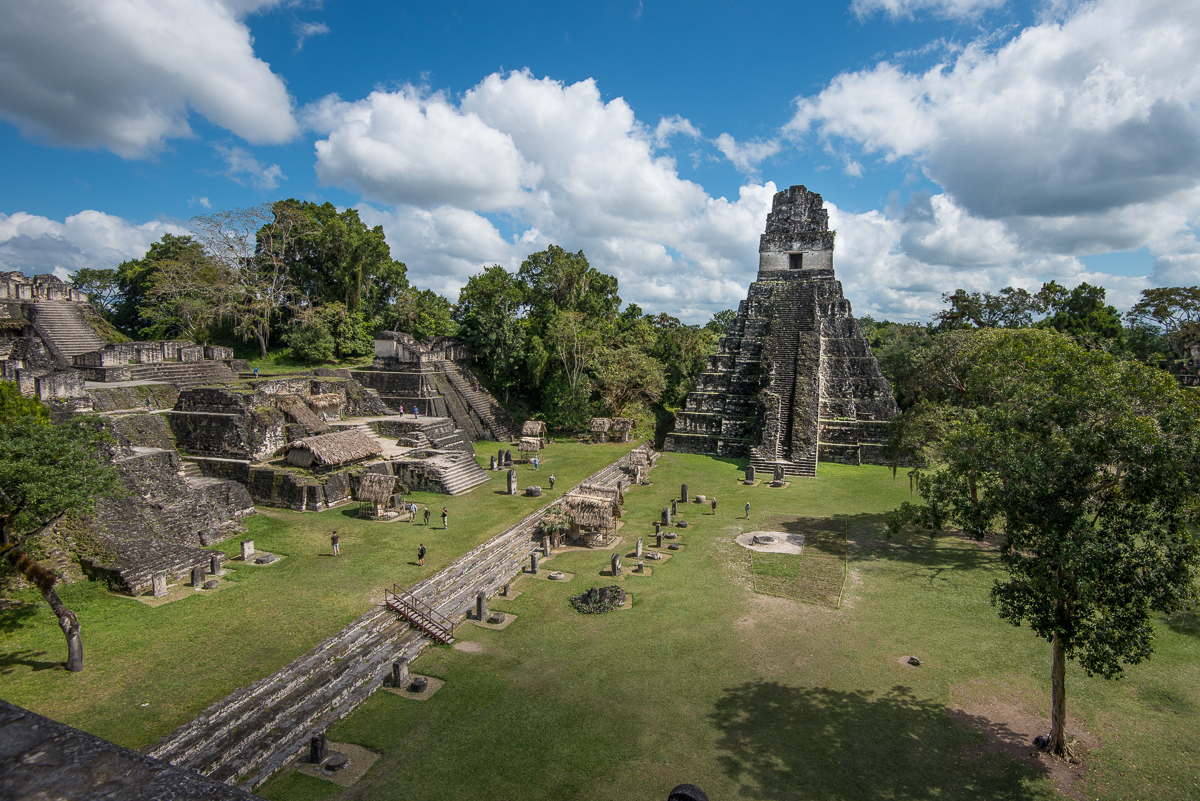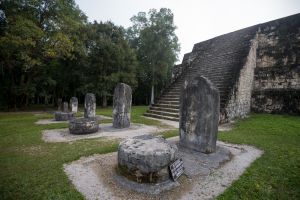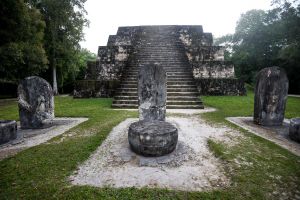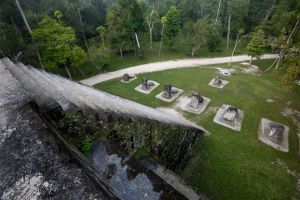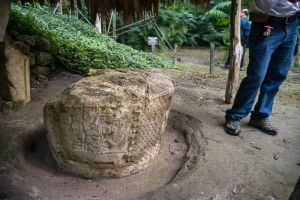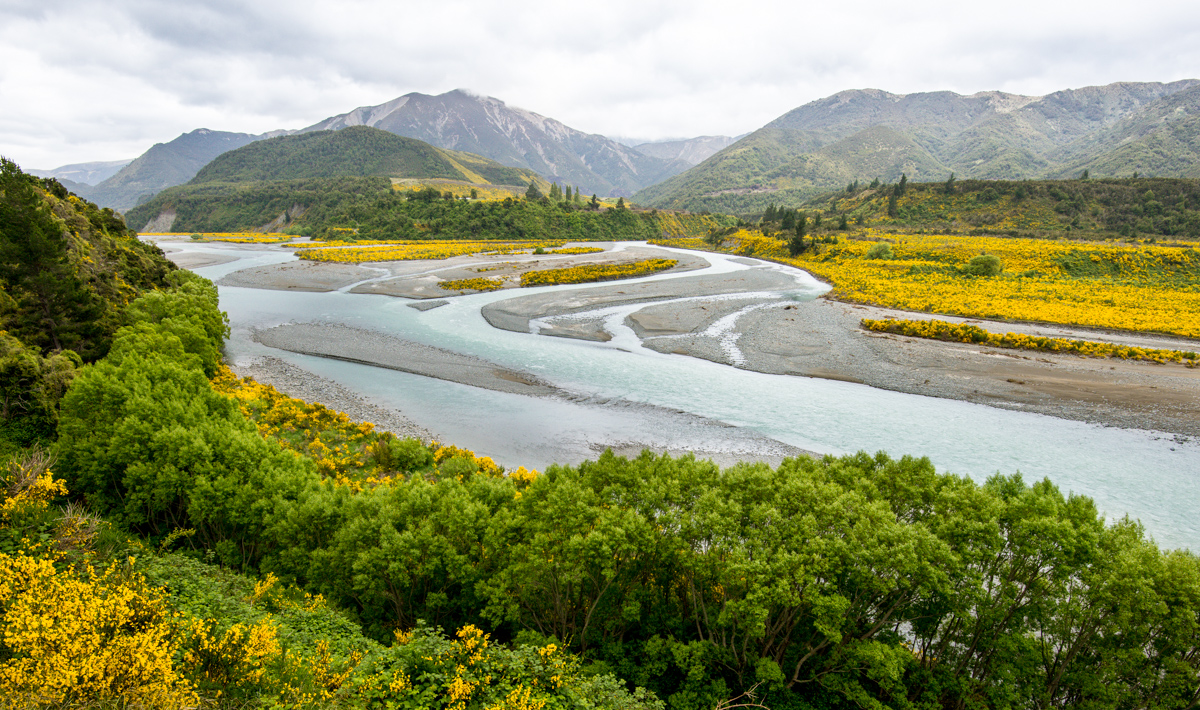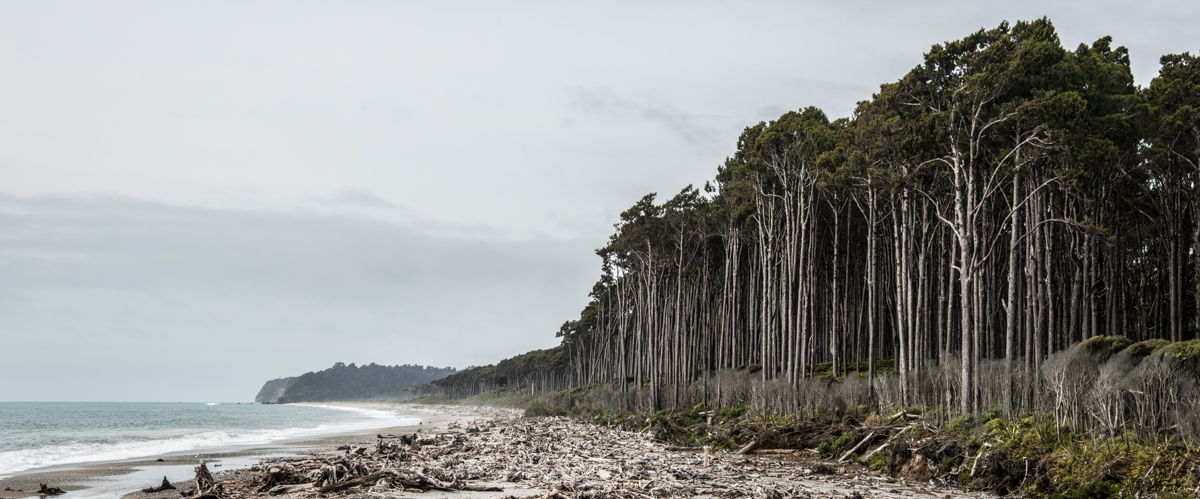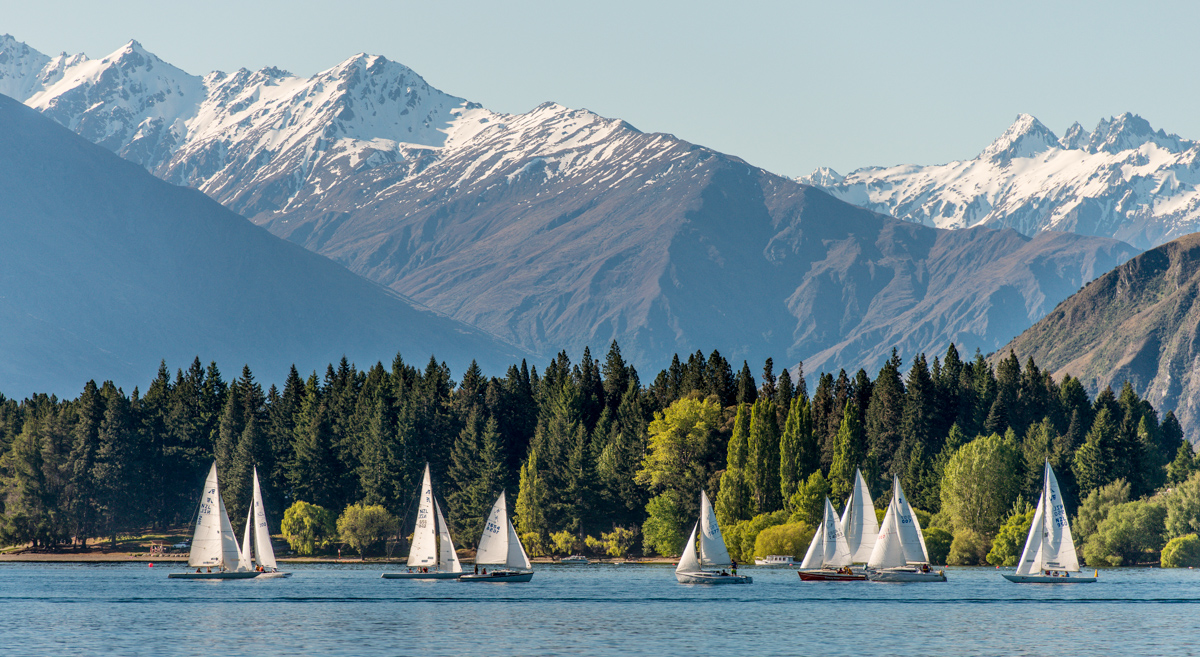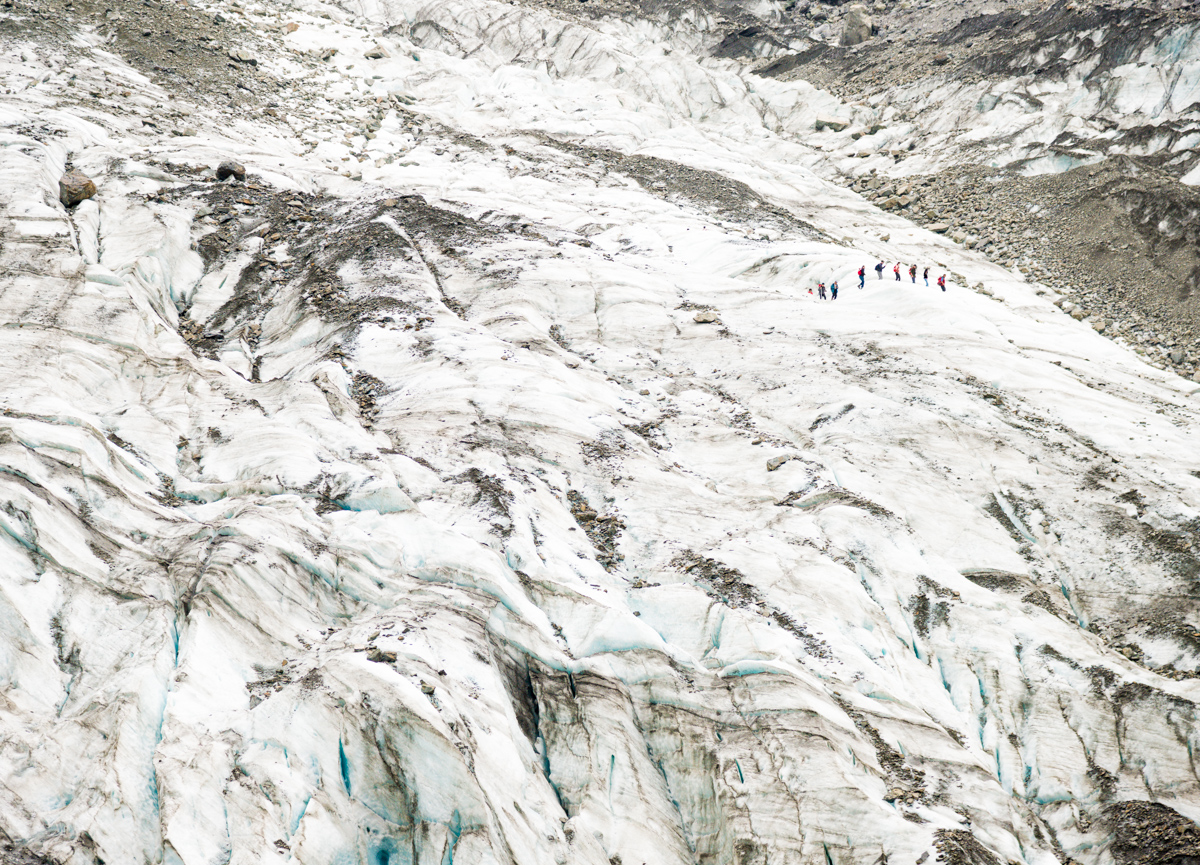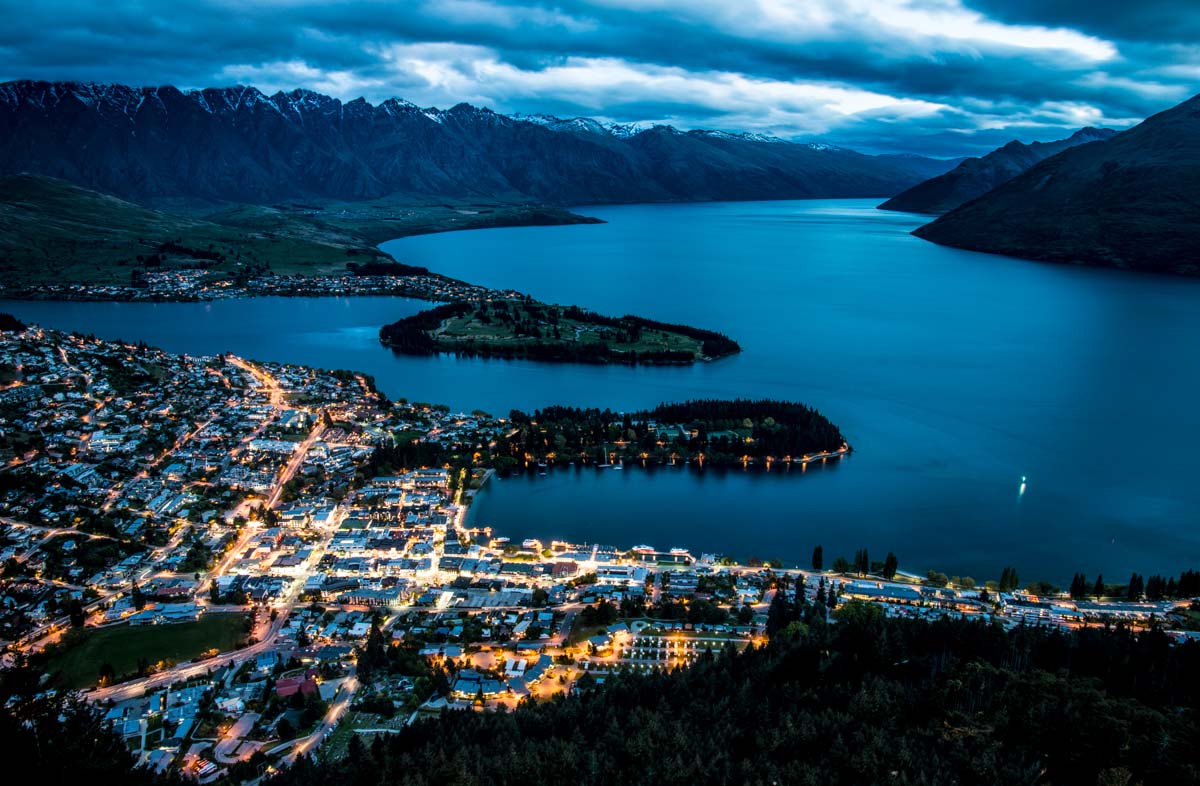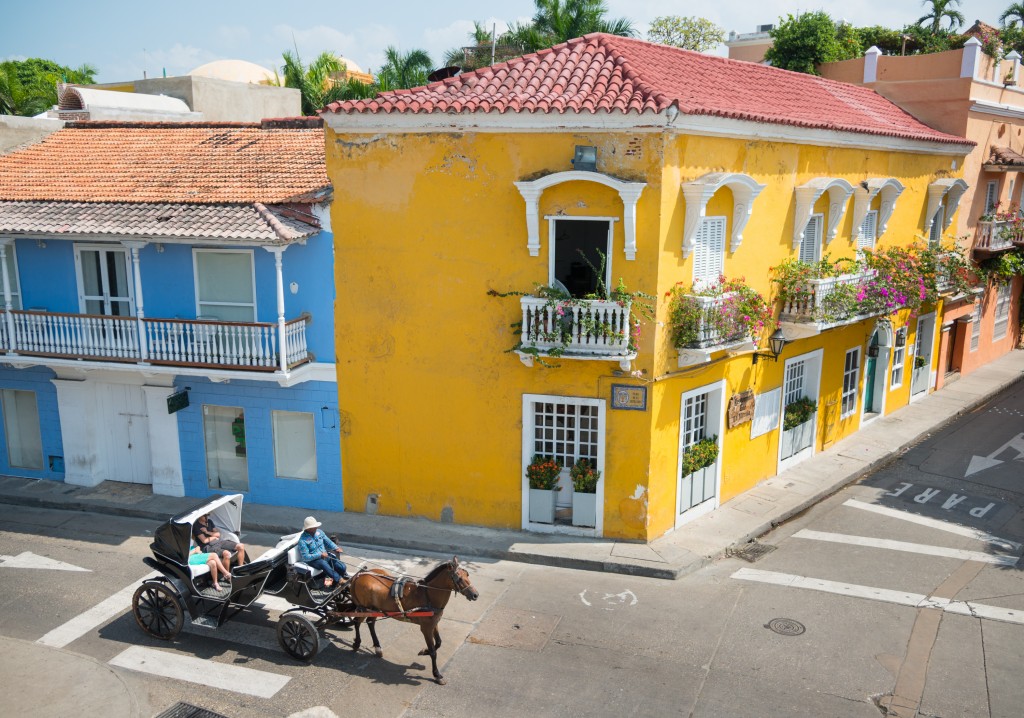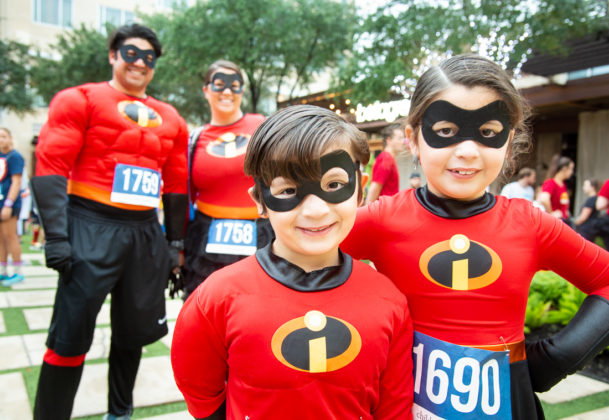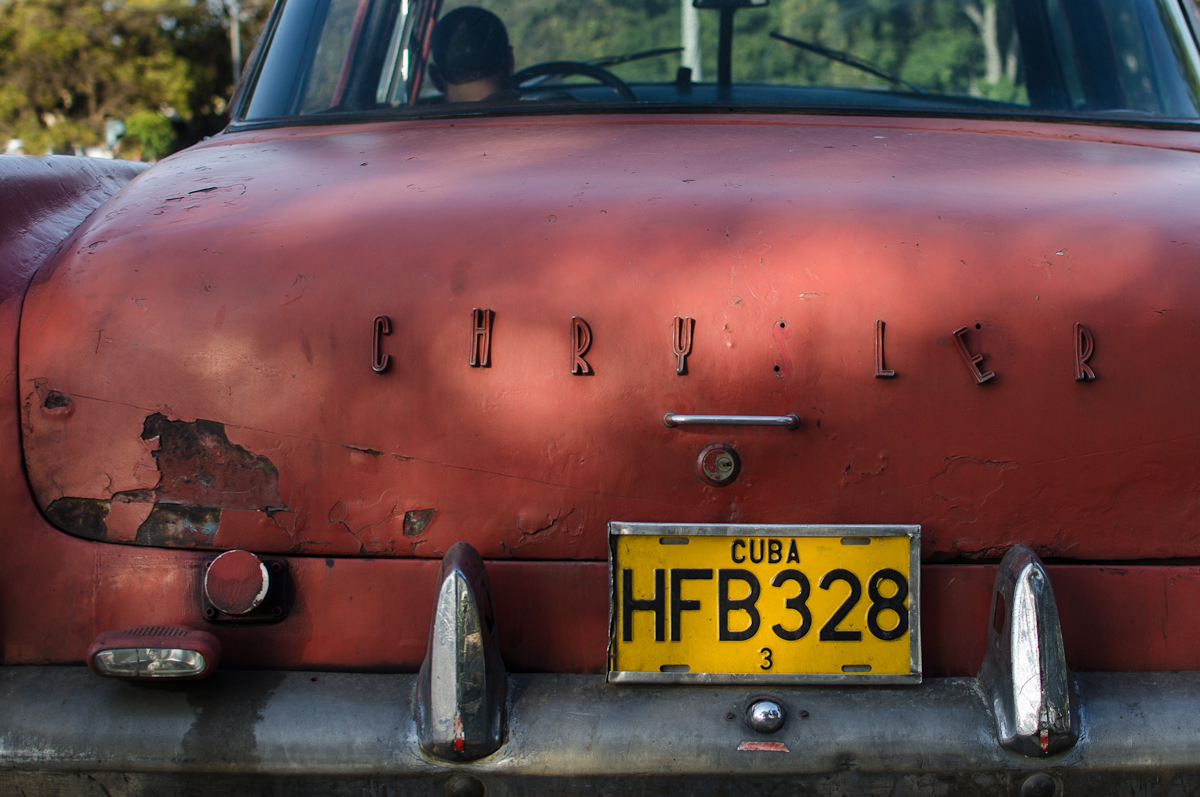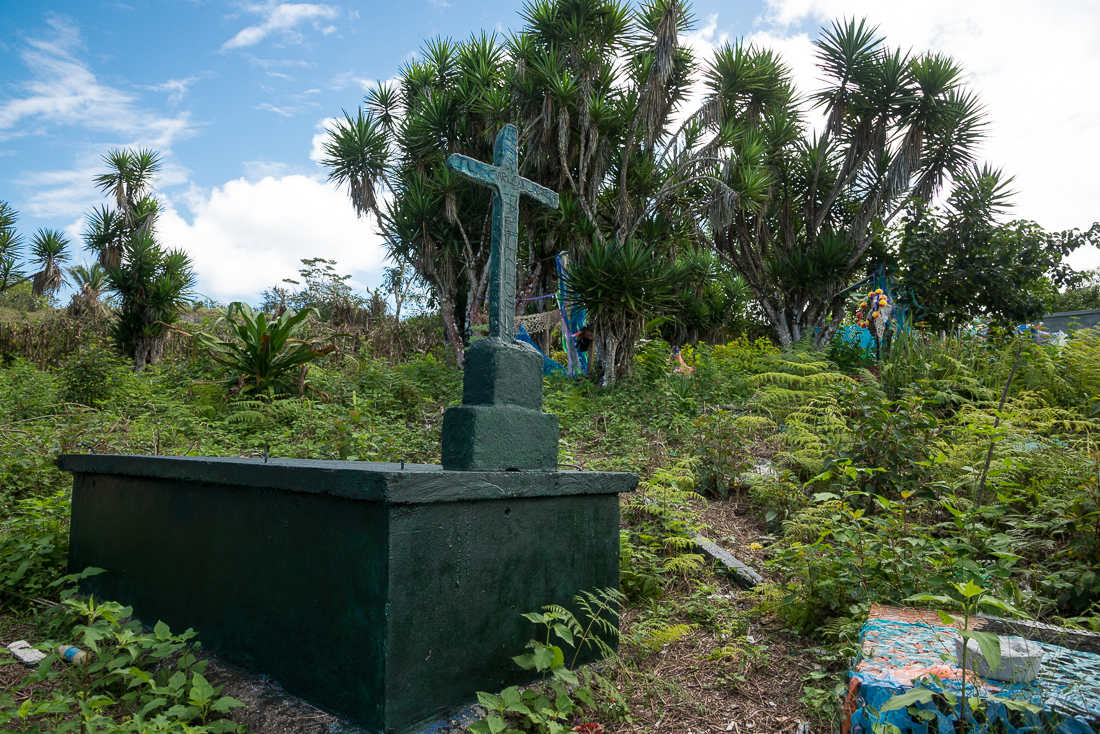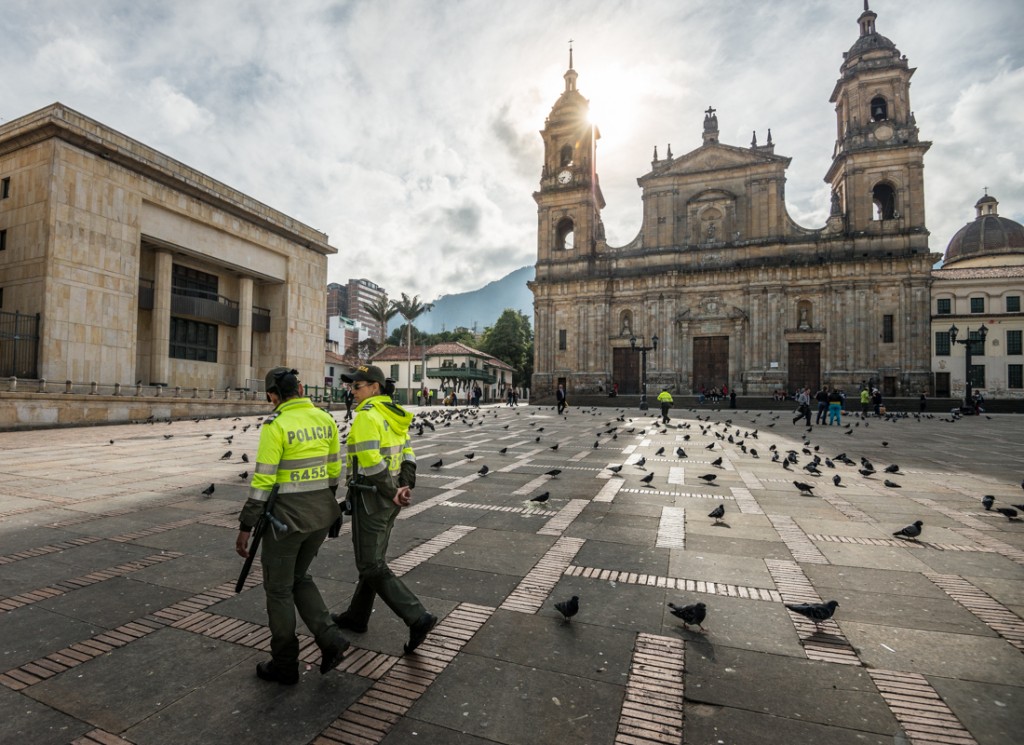Over a thousand years ago, the temples and altars of Tikal’s Great Plaza were the site of gruesome rituals of human sacrifice. At night, there are no lights, and the low, scream-like roar of howler monkeys fills the air. It’s an eerie place to be when the grounds are deserted and the sky is dark.
It’s an amazing experience – at any hour – to be amid Mayan temples that have stood more than a millennia. Friday night I had the chance to be essentially alone there after dark and after the park had officially closed, with the chance to make the whole place my private photo studio. Though I lit up the temples for these pictures, in reality there were no lights except a half moon and our handheld flashlights.
Tikal National Park is Guatemala’s most popular; it enshrines some of the most famous and prominent remnants of the ancient Mayan World. At Tikal’s center are the temples of the Grand Plaza. Each day, hundreds (sometimes thousands) of visitors tour the park. Each evening, a few dozen stay ‘til dusk to watch the sun set behind the Temples. I stayed even later – until it was truly dark and everyone else had gone home. Two park rangers waited patiently (sort of) and escorted me (and my local guide, “Henry”) out of the park long after they’d done their nightly sweep of the grounds to make sure no one else was left on the grounds.
Those night-time images aren’t Photoshop tricks. Henry and I were giddily watching them show up on the back of the camera as we moved my big tripod around the Grand Plaza in the dark. There is no electricity and no lighting at the Temples, so the light on the temples is from his flashlight, which I borrowed and used to “paint” light on the stones and trees during the long 30-second (or so) exposures). The streaks in the sky are clouds; in that amount of time, they moved quite a bit (happily, the stars did not). I haven’t picked a favorite image yet – I still can’t quite believe I was there.
All this capped off a long day: I’d been in the park at 4:30 a.m., too, in the pre-dawn darkness. Each morning a few dozen folks climb to the top of Temple IV to watch the sun rise over the Grand Plaza. I got there extra-early, and just in time to get a couple of shots before clouds and fog took over the entire view. By the time the rest of the sunrise “crowd” arrived, there wasn’t much left to see (bottom).
Through the middle of the day, I’d driven through the jungle to see the ruins at the town of Uaxactun. Mostly by accident, I’d wound giving rides to four locals, including a 100-year-old blind man who needed to get home to Uaxactun. Normally the guards at Tikal would never have let me stay at the temples at night (which is why you never see nighttime pictures). But they were the same guards who’d asked a favor of me earlier in the day and who’d seen me doing multiple favors that day for locals. So they sat patiently for at least an hour, giving me a once-in-a-lifetime photo opportunity.
